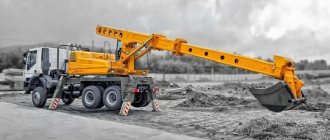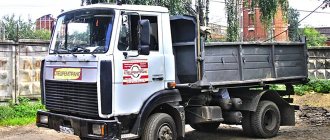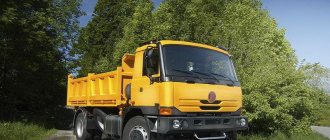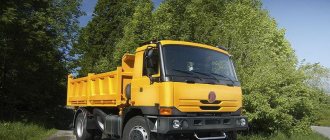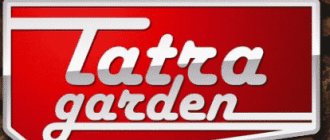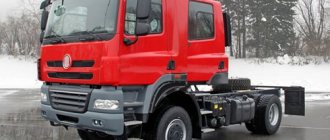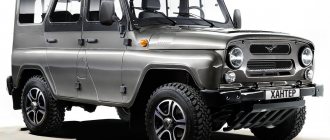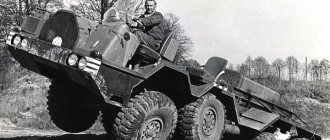The history begins with a carriage workshop in Kopřivnice, which was founded in 1850 by saddler Ignac Šustala. He made all kinds of carriages, carts, carts, and expensive carriages. In 1858, having teamed up with two fellow countrymen and received the appropriate permits from the regional authorities, Shustala built another enterprise - a factory. Soon the partners acquired the first steam engine, which powered lathes and grinders, power saws and other tools. The factory's business went uphill sharply. So, in the 70s, the production rate was 1,200 crews per year. Moreover, the products were sold not only within the country, but also gained new positions in sales markets abroad: in Turkey, on the Balkan Peninsula, in Prussia. Dealer offices were opened in Lvov, Berlin, Vienna and other cities.
Of great importance for the growth of the company was the fact that in 1881 Kopřivnice was included in the railway network, and opportunities opened up for the partners in a completely new, hitherto unknown field of industry - the production of rolling stock for the railway. Starting next year, cars began to roll out of the factory gates - first freight cars, and from 1887, passenger cars. In addition, the company, thanks to its extensive experience in the development and production of luxury carriages, has become the main supplier of high-class carriages for the leaders of a number of countries in Europe and Asia. They were exported to Canada, America and even Australia. The production of rolling stock lasted 70 years, and during this period more than 70 thousand cars of various types were produced.
By the end of the 19th century, all the prerequisites appeared for the Nesselsdorfen Wagenbaufabrikgesel-Ischaft (abbreviated NW) plant to create its own “self-running” crew. After all, the bodies were made very well, and the chassis was also not a mystery to the designers. It was up to the engine. But since it was not possible to develop our own engine, they decided to use an engine (Benz), which by that time had already been patented.
So, in 1897, a car called “President” appeared. The design was based on an expensive carriage of the “my lord” type and a two-cylinder water-cooled Benz engine with a volume of 2714 cm3 and a power of 6.6 hp was installed above the rear axle.
Just at this time, a young talented engineer, Hans Ledwinka, came to NW, who in the future proposed and implemented a number of fundamentally new technical solutions in the field of automotive engineering. At President he only had to take part in the development of the chassis, but he went through a good school and even managed to introduce a large number of his ideas into the first-born of the company.
A year later, the NW plant produced a truck of an original design, and marked the beginning of the 20th century with a new development - a racing car, which turned out to be not only competitive, but superior to its contemporaries in a number of characteristics. Unfortunately, the First World War postponed experimental work on new engines and units, and even more so on cars. NW, renamed Tatra, produced simple vehicles for the army and military needs.
But in the post-war period, Tatra made the entire automotive world talk about itself.
In 1921, Hans Ledvinka, who was temporarily working for (Steyr), returned to Tatra with a project that at first seemed absurd. The fact is that the car he proposed did not have a traditional frame. Instead, there was a pipe running along the car - the so-called spinal frame with components and assemblies attached to it. In addition, the rear suspension was independent, with swing axle shafts, and the two-cylinder engine was air-cooled.
This original design fully justified itself on the bad roads of the 20s. The car became famous for its incredible durability and reliability. It was almost impossible to disable it.
Mercedes-Benz, Austro-Daimler, and even our NAMI experimented with the backbone frame, but perhaps only Tatra remained true to this concept to this day. For almost 80 years, it has been producing vehicles of this design - passenger cars, trucks and special purpose vehicles.
The company experienced particularly rapid development after the Second World War. Its product range includes heavy trucks (bonneted) and even high-class passenger cars. And the sharp rise in the national economy, increasing exports (especially of trucks) in connection with widespread post-war construction, and in completely different climatic and natural conditions, forced the company to more competently approach the strategy of creating a new truck. It is no secret that sometimes the decisive factor in the implementation of many industrial and construction tasks is the availability of heavy vehicles. In the late 60s and early 70s, the Council for Mutual Economic Assistance (CMEA) decided to specialize in the production of motor vehicles. That is, some countries, members of the CMEA, had to produce more passenger cars, others focused on the production of small and medium-tonnage trucks, in particular, heavy trucks went to Czechoslovakia, more precisely.
By that time, Tatra was producing, at enterprises located in four cities of the country, trucks of the 148 series (hooded) and wagon tractors of the 813 series. Both vehicles were distinguished by exceptionally high performance, reliability, unpretentiousness and operability both in the conditions of the Far North and and in sultry deserts. Thousands of Tatra-148 trucks worked on construction sites in various parts of the USSR.
A logical continuation of the family of trucks of the 148 and 813 series was the creation of a more modern truck of the 815 series. It was distinguished by a high degree of unification and the ability to solve any problems of transport workers. In 1971, the final decision was made to finance this project and transfer production to the national enterprise Tatra. Two-thirds of the loan provided by the International Investment Bank was used for technological retrofitting and major restructuring of factories, since with the start of production of the 815 series, Czechoslovakia was going to double the number of products to provide trucks to both the CMEA member countries and other markets.
The first 815s rolled off the production line in 1979. At the same time, the entire range of trucks was offered. After some modifications and comprehensive testing, the newcomer went into production. The year of the beginning of its industrial production is considered to be 1983.
Tatra T 815
Tatra 815
is a family of heavy-duty trucks from the Czech company Tatra, launched in 1983 [2] [3] [4]. All trucks in the family have a backbone frame traditional for this manufacturer and independent wheel suspension [5]. Trucks of this series are equipped with air- or liquid-cooled diesel engines with a capacity of 310–820 hp. With. Initially, the vehicle was developed to replace the Tatra 813 model and was intended to work in difficult road conditions or off-road, but road versions of the truck are currently being produced.
What is the Tatra-815 family?
We already know the main characteristic features:
— 4-stroke air-cooled diesel engine; — rigid spinal frame with brackets for fastening components, assemblies and bodies; — independent suspension of all wheels with swing axles; — all-wheel drive with the ability to disable the front axle and wheel configurations 4×4, 6×6, 8×8, etc.
The complete list of the family includes seven types of dump trucks, two types of flatbeds, four truck tractors, twelve chassis and ten types of special vehicles. Plus four types of engines and two types of axles (with and without wheel reduction gears). Thus, if there are other nodes, the number of options is practically unlimited. Thanks to this, each transport company can solve its own problem.
Only air-cooled diesel engines are used as the power unit. Their advantages are obvious: ease of maintenance, better adaptation to climatic conditions, less susceptibility to mechanical damage and a simpler design (no “water jacket”, radiator, pump, pipes, etc.). For the super-heavy versions, a 12-cylinder turbocharged engine was created. Power range from 170 to 235 kW. Torque is transmitted to a gearbox (with a divider) with 10 - 20 forward gears and 2 - 4 reverse gears. The presence of a divider allows you to optimally select the speed depending on road conditions. The clutch for all versions is the same - disc (diameter 420 mm), dry, with a hydraulic drive and pneumatic booster.
A rigid backbone frame allows you to create a spatial structure that, thanks to the tightness of connections and a minimum of gear pairs, ensures a long service life of differentials and drives. In addition, reducing the number of rubbing surfaces reduces overall losses and, as a result, increases the efficiency of the vehicle (as calculations have shown, sometimes up to 20%).
The front suspension is designed in an original way: longitudinal torsion bars with wishbones and powerful shock absorbers. This design makes it possible (which in some cases is very important!) to move the front axle forward, providing better weight distribution along the axles, increasing the wheelbase for the same vehicle length, and making it easier to connect the drive axle to the transmission.
The rear suspension consists of swing axle shafts, spring-loaded with leaf springs. Torque is transmitted from the transmission by intermediate driveshafts through the center differential. By the way, for difficult road conditions, the differentials of the rear axles and the center axle have locking.
The driver's cabin on all versions of the car is carriage-type and modular. The latter allows you to make five different cab options from the same elements: from forward (for a crane chassis) to multi-seat (various types of special and army vehicles). For convenient access to the main units and the engine, it tilts forward using a hydraulic system. Reinforcing it with spatial stamped elements increases passive safety (the layout is carriage-type). Much attention is paid to environmental and ergonomic problems. For the first time, designers took noise absorption so seriously. The engine noise level felt outside is reduced by almost 15%, and in the cabin - by almost three times! And all thanks to the special hooding of the engine compartment. The placement of all main controls and instruments complies with the new UNECE safety and ergonomic requirements. The car has places for fastening seat belts, a new type of independent heater, a three-blade windshield wiper, an air-suspension seat and much more.
To increase operational safety, three independent brake systems are used: dual-circuit working, with a pneumatic drive, acting on all wheels; emergency and parking (manual) operates on both rear axles; an additional electrically driven retarder (motor) is directly connected to the braking system of a possible trailer.
The most common versions of cargo “Tatras” are dump trucks with one-way unloading (only back) to three-way (on three sides), the towing device of which allows the vehicle to be operated as part of a road train with a total trailer weight of 18 tons.
As already mentioned, Tatra created a family of trucks designed to solve a variety of tasks, and in this case, multifunctionality dictates its own laws to appearance and, as a rule, not for the better. However, this circumstance did not prevent the company’s specialists from creating a car with a rational and aesthetic design for its time.
Design features of the Czech dump truck
Today there are many models and modifications of this truck. In some ways they differ from each other. However, there are a number of features and technical characteristics of the Tatra 815 that unite varieties of different years and series. These are, in particular:
- the spinal frame is a unique development of the Tatra brand from the 20s of the last century;
- independent suspension with swing axles;
- diesel engine with liquid or air cooling system;
- relatively small dimensions: the distance between the cabin and the road surface is 1.97 m, the length of the loading platform is 2.4 m, the width is 0.43 m;
- load capacity up to 17 tons;
- maximum weight of a loaded road train up to 44 tons;
- tilting cab with two seats;
- in the northern version - the presence of an additional engine heater and a device for heating the oil;
- maximum fuel consumption – 45 l per 100 km;
- straight line speed – up to 90 km/h.
Among the main advantages of the Tatra 815 dump truck, they especially highlight its high cross-country ability, including overcoming ascents and descents, and the ability to transport cargo not only of large mass, but also of impressive dimensions.
The machine is distinguished by its ease of maintenance and resistance to extreme operating conditions, especially low ambient temperatures. Next - about some of the nuances of the car's design in more detail.
Contents of the repair manual Tatra 815
BUY TATRA 815 Repair and maintenance manual
1. Warnings and Safety Information Occupant Safety 4 Occupant Restraint Systems 4 Seat Belts 4 Occupant Safety 5 General Safety Information 5 Specifications 7 Vehicle Identification 8 Vehicle Nameplate 8 VIN 8 Chassis Identification Number 8 Engine Production Number 9 Technical description of the vehicle 9 Engine 9 Clutch 9 Gearbox 9 Power take-off from the gearbox 9 Front axles 9 Rear axles 9 Steering mechanism 9 Front suspension 9 Rear suspension 9 Wheel assemblies 10 Tire inflation 10 Brake systems 10 Chassis 10
2. Operation Tatra 815 Vehicle cabin 12 Arrangement of elements in the vehicle interior 12 Toolbox 13 Windshield washer 13 CIEB seats with air suspension 13 GRAMMER seats with air suspension 13 Seat belts 13 Instruments and controls 14 Switches and indicator lamps 14 Controls 15 Additional switches 16 Fuse block 16 Fuses 17 Diodes 17 Relays 17 Steering column switches 18 Description of instruments and parts 18 Heating system 19 EBERSPÄCHER auxiliary heater 19 Heater operation without a timer when the ignition is off 20 Heater operation without a timer when the ignition is on 20 Programming the start of heating 20 Climate control 22 Cabin air filter 22 Description of the climate control system 23 Raising and lowering the cab 24 Driving the car 24 Running in 24 Operation in winter 25 Braking systems in winter 26 Recommendations regarding winter operation of the car 26 Trip 26 Before going on the road 26 After driving 26 Starting the engine 27 Starting a warm engine 27 After starting the engine 27 Engine temperature while driving 29 Speed limiter 30 Gearbox 30 14-speed gearbox type 14 TS 210 L or 14 TS 180 T 30 H/L gears 31 Starting off / shifting up 31 Starting off in C -gear / shifting gears UP 32 Shifting gears DOWN 33 Reverse gear 33 Braking systems 34 Activating the front axle drive and center differential 36 Tire pressure control system - CTIS 36 Operating a vehicle with a semi-trailer 38 Rear underrun protection 39 Towing a disabled vehicle 40
3. Maintenance Tatra Daily 42 Weekly 42 Routine checks at intervals 42 Engine maintenance 42 Fuel system 44 Air filtration 46 Clutch and shaft maintenance 47 Shafts 47 Gearbox 48 Additional gearbox 48 Axles 48 Wheel reducers 49 Wheel hubs 49 Lubrication points on front axle 49 Suspensions 49 Braking systems and pneumatic equipment 50 Air dryer 51 Condensation tank 51 Charging brakes with compressed air 51 Emergency release of brake chambers with a spring energy accumulator 52 Servo control 52 Cab, heating and ventilation system 53 Body superstructure 53 Mechanism for raising and lowering the loading platform 53 Saddle but-coupling device 55 Electrical equipment 55 Batteries 55 Headlights 55 Solenoid valves 56 Tensioning and replacing the alternator belt and air conditioning compressor belt 56 Turbocharger 57 Operating fluids 58 Brake fluid for the clutch hydraulic circuit 58 Oils and lubricants 58 Engine oil 59 Transmission oils 60 Wheel drives 61 Servo control , hydraulic mechanism for raising and lowering the cargo platform of a semi-trailer 61 Mechanism for raising and lowering the cabin 62 Drive shaft, splines, bearings 62 Lubrication frequency 63 Lubrication points 63 Filling volumes 64 Tightening torques 64 Tightening torques for metric bolts and nuts 64 Tightening torques for pipeline connections on instrument shafts 64
4. Repair manual Tatra Engine 66 General information 66 Engine control 71 Basic technical data 72 Control parameters 73 List of faults and methods for eliminating them 77 Removing the engine 80 Disassembling the engine 82 Disassembling the engine crankcase 85 Crankshaft 86 Connecting rod 87 Cylinder head 88 Checking and adjusting the clearance valves 92 Flywheel housing 92 Front cover 93 Engine assembly 94 Engine installation 100 Lubrication system 101 Changing the oil and oil filter 101 Centrifugal oil filter 101 Oil temperature sensor 102 Oil pressure sensor 103 Oil pump 103 Oil cooler 106 Fuel system 108 Cleaning the fuel tank 108 Coarse filter fuel cleaning 108 Fine fuel filter 109 Manual fuel priming pump 109 Injectors 109 Fuel rail 111 Fuel pump control 111 Fuel pump 113 Cooling system 117 Electronic engine cooling system control 117 ERCH solenoid switch 117 Cylinder head temperature sensor 118 Cylinder head cooling fins, coolers supplied air , oil cooler and cooling fan 118 Solenoid valve for oil supply to the fan fluid coupling 118 Fan 119 Intake and exhaust system 123 Intermediate radiators 123 Air filter 124 Turbocharger 126 Attachments 128 Engine brake 128 Exhaust muffler 128 Gear generator 129 Single-cylinder compressor 129 Two cylinder compressor 130 Starter 131
5. Clutch Tatra 815 List of faults and methods for eliminating them 135 Checking the clutch 136 Checking the thickness of the clutch disc lining 137 Replacing the fluid in the clutch drive system 137 Adjusting the clutch drive in the driver's cabin 138 Drive shaft 138 Clutch shaft 139 Clutch master cylinder 140 Clutch booster 141 Carter clutch 142
6. Tatra gearbox List of malfunctions and methods for their elimination 150 Tightening torques of the main connections 151 Changing the oil in the gearbox 151 Adjusting the shift mechanism for additional gears H(N) / L(R) 152 Seals of the drive shaft of the gearbox 153 Gear shift controls 154 5th and 6th gear shift switch 157 Gearshift amplifier 157 Oil pump 160 Top cover with drive shaft 161 Gearbox 162 Additional gearbox 180 List of faults and methods for their elimination 181 Tightening torques for main connections 182 Oil change 183 Adjustment of synchronization shift 183 Shift Interlock Valve 184 Oil Pump and Rear Cover Gears 185 Drive Shaft 187 Auxiliary Transmission 191
7. Carrier and differential List of malfunctions and methods for their elimination 204 Tightening torques of the main connections 204 Control cylinders for engaging differential locking mechanisms and front drive 204 Front support pipe 206 Front connecting part 207 Rear support pipe 208 Rear connecting part 208 Center differential 209 Cross-wheel differential 213
8. Axles and transfer case Tatra Axles 222 Technical data 223 List of faults and methods for eliminating them 223 Tightening torques of the main connections 224 Oil change 225 Wheel bearing clearance 225 Kingpin 227 Checking and adjusting the clearance 231 Removing and installing the kingpin 233 Drive shaft 235 System tire inflation system 238 Front axle tire inflation system seals 238 Rear axle central tire inflation system seals 239 Axle shaft protection 239 Front axles 240 Rear axles 247 Drive drive shaft bearing in axle shaft 253 Bevel gear engagement adjustment 254 Transfer case 256 Front axle transfer case 256 Transfer case box rear axle 265
9. Steering Tatra 815 List of malfunctions and methods for eliminating them 277 Tightening torques of the main connections 277 Changing the oil in the servo control system 277 Replacing the filter element in the servo control system 278 Checking the control play 278 Checking and adjusting the geometry of the wheels of the front axles 278 Checking the tightening of the mounting bolts of the control arms about steering axles 281 Steering wheel 282 Ignition switch 282 Spindles with hinges connecting the steering wheel to servo control 282 Servo control monoblock 285 Control rods 287 Control rods with joints 289 Double-arm control lever 290
10. Brake system Tatra 815 General information 294 Basic technical data of the brake and pneumatic system 298 Tightening torques of the main connections 298 List of faults and methods for their elimination 298 Safety rules 300 ABS system 300 Diagnostics of the ABS system 300 ABS system valves 301 ABS system sensors 301 Condensation tank 302 Air dryer 302 Monitoring the tightness and function of the pneumatic system 303 Bypass valve for the central tire inflation system 304 Pressure reducing valve 305 Main brake valve 305 Safety valve 308 Load regulator 309 Emergency and parking brake control valve 310 Hand brake valve 311 Solenoid pneumatic valves 312 Bypass valve 313 Valve position adjustment pan steering wheel 313 Check valves 314 Polyamide tubes 314 Suspension control valves 315 Brake drum and brake pads 315 Brake cylinders 316 PERROT pad spacers 317 Reservoirs 318
11. Suspension Tatra 815 General information 320 Control parameters 321 Tightening torques of the main connections 321 List of faults and methods for eliminating them 321 Checks 322 Replacing the rubber stops of the axle suspension 323 Shock absorbers 323 Bellows spring of the rear axle suspension 324 Bellows spring bracket 326 Air suspension adjusting valve 326 Spring earrings , support pin and leaf spring lock 326 Leaf spring 327
12. Saddle and frame Saddle 330 Frame 331 Checking and tightening the fastening nuts connecting the frame to the chassis 331 Spar frame 332 Front bumper 334
13. Electrical equipment Tatra 815 Generator 336 Additional autonomous heater 337 List of faults and methods for their elimination 339 Fuses 341 List of locations of fuses and diodes 341 List of locations of electromagnetic relays 342 Designation of elements of electrical devices in diagrams 343 Electrical diagrams 353
BUY TATRA 815 Repair and maintenance manual
Modification options and types of engine models
The Tatra-815 truck is ideal for off-road use. The manufacturer today produces cars with an advanced V-shaped diesel engine, which is distinguished by the introduction of an air cooling system. The engines are represented by units with 8, 10, 12 cylinders, which fully meet the accepted Euro environmental standards. The power plant is equipped with an advanced fuel injection system with the addition of an incoming air cooler, which is installed above the crankshaft based on special roller bearings. Let us consider in detail the main modifications of the technology:
- "Tatra T-815 - 2A0S01." The car model is equipped with a modern body with the addition of a heating system and a one-way principle of unloading material with a volume of no more than 10 m 3. The maximum carrying capacity of the vehicle reaches 17 tons. The machine is equipped with a powerful 8-cylinder engine maintaining a working volume of 12.7 liters. and maximum power of 312 hp.
- "Tatra T-815 - 290S24." A dump truck with a platform, which is heated using exhaust gases. Unloading is carried out through the tailgate. The geometric volume of the body is 12 m3. The maximum load capacity of the Tatra-815 reaches 19.5 tons, and the engine power is up to 402 hp.
- "Tatra T-815 - 290S84." A cargo vehicle using an 8x8 wheel arrangement and a one-way type of unloading of the body through the rear side. The maximum volume of the loading platform is 14-16 m3. The car assumes the possibility of adding two bodies. The maximum load capacity reaches 24.6 tons with a functional power of 402 hp.
- "Tatra T-815 - 290S84." The car is equipped with an advanced cargo platform without the use of a special heating system and three-sided unloading. The possibility of trailed traction is provided. The model provides simultaneous transportation of up to 9.5 tons. The declared engine power is 362 hp.
- "Tatra T 815 - 280S25". The model is equipped with a body using a three-way unloading system, and the possibility of moving an additional trailer is provided. The vehicle is capable of transporting up to 16.4 tons, and the actual engine power reaches 362 hp.
Tatra 815 dump truck - reviews from equipment owners
Andrey, truck service worker
I'll start with the main Tatra 815, one of the best models of trucks that I have had to repair. The main thing that the owner of this vehicle needs to know is a certain sequence of gear shifts, that is, to avoid jerking and not to break the clutch. While working in a car service center, about 40 Tatra models 815 passed through me, I noticed that the spring leaves lasted for 250-270 thousand kilometers, then they straightened and cracked due to the load. But this is rather a plus, since replacing them with such a mileage excluded emergency repairs.
The advantages of the 815 Tatra are its reliability; if you don’t deliberately “ruin” the car, it will last for many years.
Among the shortcomings of the Tatra 815 model that I identified, I note the ABS system sensor; due to off-road driving, the sensor became covered with dirt and the gap between it and the comb decreased; such an “illness” was treated simply by pressing the sensor and installing it in its place.
In addition, the disadvantages of the Tatra model 815 include fuel consumption, which is truly enormous.
Vladislav, owner of Tatra 815 (2007)
I own a Tatra 815 dump truck - 2007, the car is easy to repair, reliable, has all-wheel drive, in general a workhorse. My fleet contains several more Scania and Volvo dump trucks, but the Tatra is an order of magnitude more reliable, because it does not have balancers on the rear cart, and the crosspiece travels up to 500 thousand kilometers, the transmission is designed for maximum traction force, which of course reduces the maximum speed, but it protects you from fines and reduces the accident rate when driving.
My Tatra 815 model carries up to 17 tons of cargo, I agree a little, but with the current fines for overloading, such a disadvantage turns into an advantage of the car, and besides, the design is designed not to overload in case of urgent need.
In addition, the most likely advantage is the absence of newfangled electronic gadgets, which ultimately makes it easier to repair equipment, more hardware, less electronics, hence the ease of repair.
I didn’t notice any particular shortcomings in Tatra, I repeat, a workhorse for making a profit.
Tatra 815 clutch diagram
Reasons for removal and installation
Disc wear does not guarantee reliable operation (wear has reached the permissible limit of 18 mm).
Slipping (clutch pedal free play is correct). The malfunction is caused by wear or oiling of the clutch driven disc lining (disc).
The clutch does not disengage; when changing gears, noise is heard from the gearbox (the hydraulic drive is not damaged). The malfunction is caused by a burnt or damaged clutch disc lining, its retention on the shaft splines, or wear (seizing) of the rear crankshaft journal bearing.
The clutch disengages poorly and jerks. The clutch disc lining is burnt out, the clutch disc is deformed, the release mechanism is damaged (pressure plate, return band or disc spring); free movement of the shaft, damaged locking ring spline.
When disengaging the clutch or during operation, the noise level of the shaft bearings or clutch release bearing is increased.
The clutch housing, lever, shaft, bushing or clutch bearing are damaged.
As long as there are such people, there is hope
During massive fires, this man, without hesitation, got into a tractor and began plowing the land near residential buildings during today's fire!
Thus, he localized the spread of fire and saved at least 20 residential buildings.
His name is Teslenko Sergey Grigorievich
